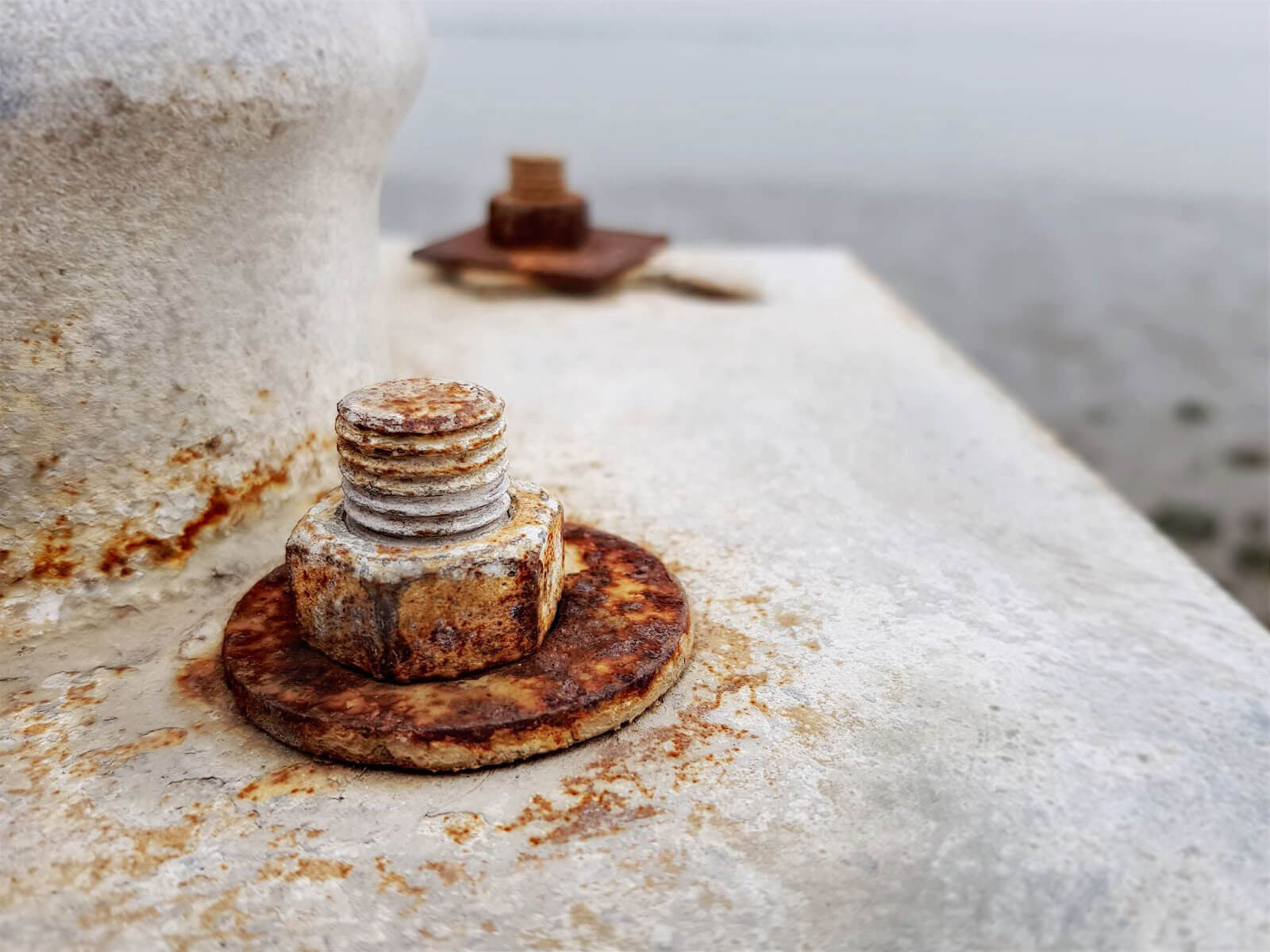Corrosion is a global problem. Steel constructions, such as bridges or supporting structures, are particularly affected, but also industrial plants, railways, pipelines, vehicles and machines.

Corrosion and its origin.
In the broadest sense, corrosion is a physicochemical process in which a material reacts with components of the surrounding environment, changing fundamental properties in the process. Therefore, corrosion is primarily an environmental phenomenon.
Not only metals are subject to corrosion, but also non-metallic materials such as ceramics and glass. Old and historically valuable stained-glass windows in churches are particularly affected. Corrosion here is based on ion exchange processes. They cause structural changes in the material over long periods of time, which can eventually result in complete destruction.
Electrochemical corrosion
Electrochemical corrosion is associated with the formation of a galvanic element. In a galvanic element, two dissimilar metals, two electrodes, anode and cathode, face each other in an aqueous electrolyte between which an electric potential is formed. If both electrodes are connected to each other through an electrical conductor, an electric current flows. The base electrode, the anode, dissolves.
In electrochemical corrosion, the electrodes are provided by different components of a metal structure or by inhomogeneities within a metal alloy. The electrolyte is usually penetrating water, e.g. rainwater, with which a galvanic “short-circuited” element can then be formed. The consequence of this is the progressive electrochemical dissolution of the anodic metal part, which eventually leads to loosening of the metal connections or corrosion inside the metal part, i.e. pitting.
Chemical corrosion
Chemical corrosion refers to the reaction of metals with oxidizing agents based on chemical processes. Here, the direct reaction of metals with oxygen is dominant: they “oxidize” the metal and form a metal oxide. However, corrosion with oxygen does not always cause damage, as can be seen, for example, in scale when working with iron.
The reaction with atmospheric oxygen can also form oxide layers on the surface, which protect the underlying metal from further chemical attack. In such cases, we speak of passivation.
Corrosion caused by metal physics
The causes of metal-physical corrosion lie in structural changes in metals caused by external influences. Thanks to current knowledge in the field of metallurgy, due to alloying with small amounts of other metals, hardly plays a role in corrosion anymore.
Corrosion: also an environmental problem
Corrosion is not only a problem in the chemical industry, where plants and pipelines are attacked and corroded by aggressive media. It is also an environmental problem because worldwide, hard-to-reach environmental pollution contaminates the atmosphere with chemically reactive substances, such as nitrogen oxides from the exhaust gases of large combustion plants and automobile traffic, which are converted into nitric acid (HNO 3) in a chain reaction, or with sulfur dioxide (SO 2), which results mainly from the use of sulfurous fossil fuels and leads to the formation of sulfurous acid (H 2 SO 3).

